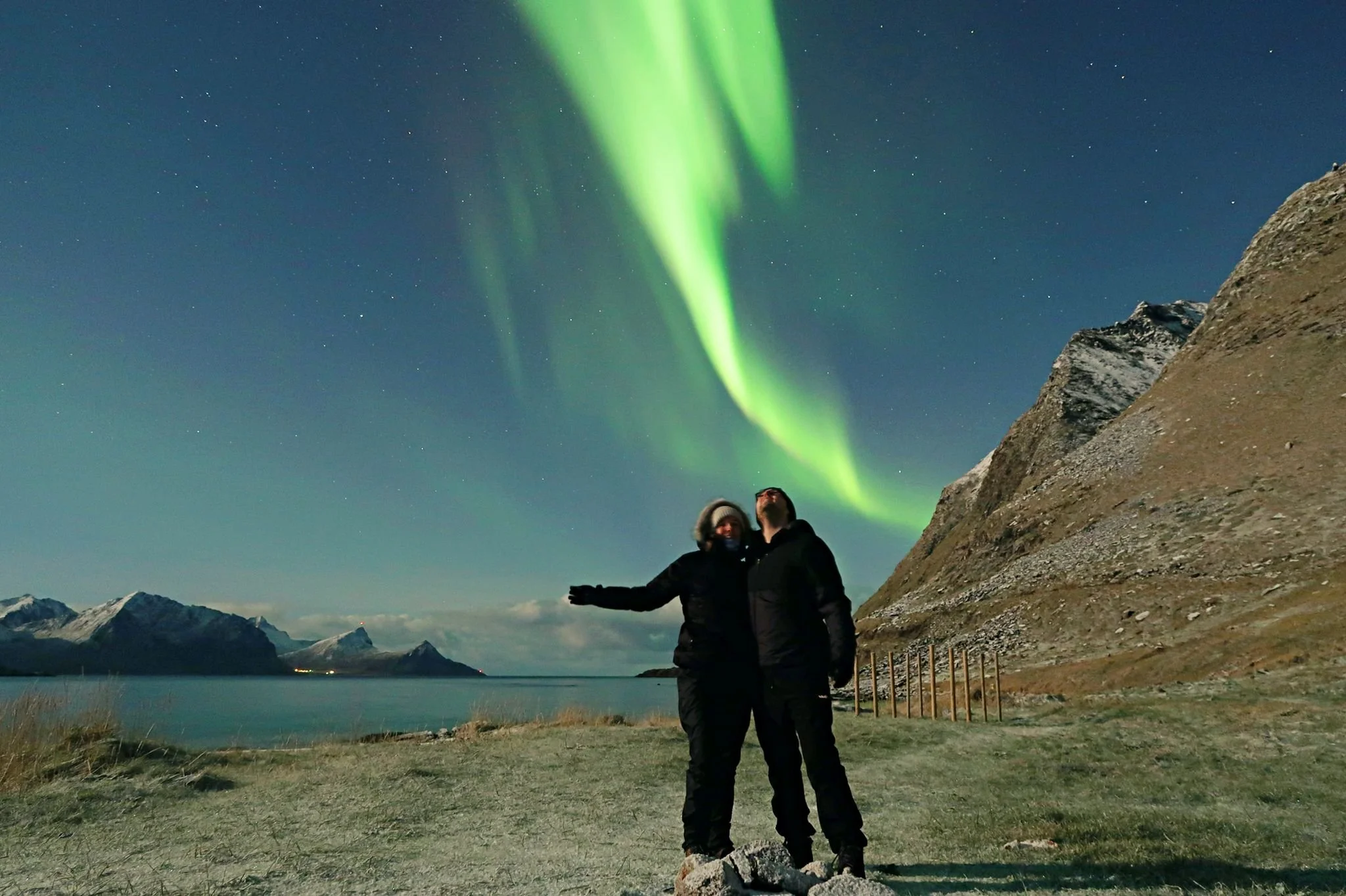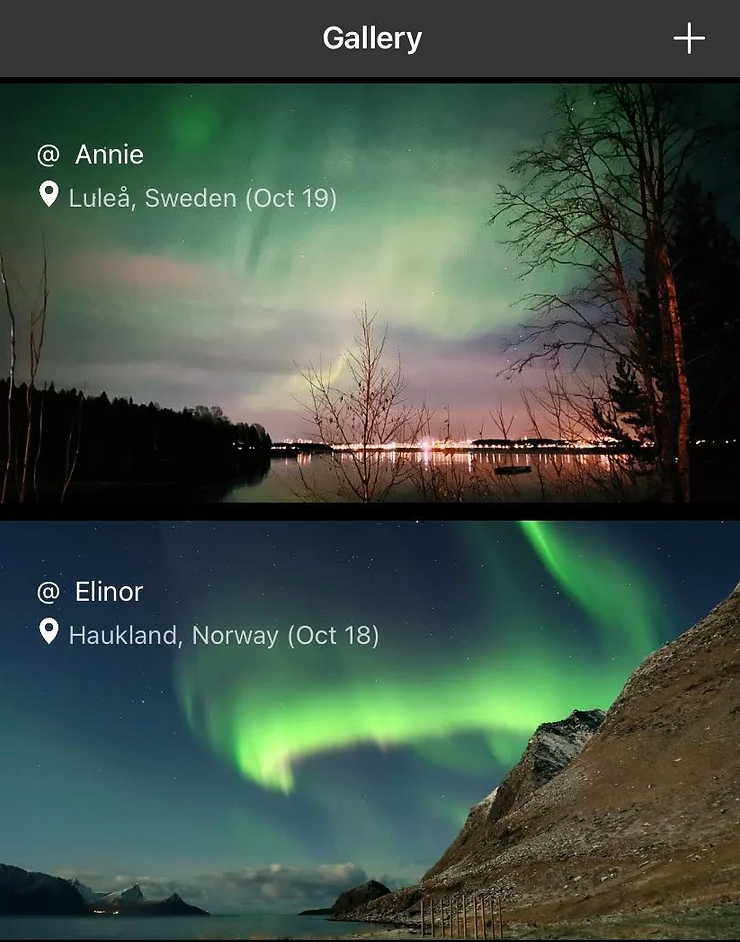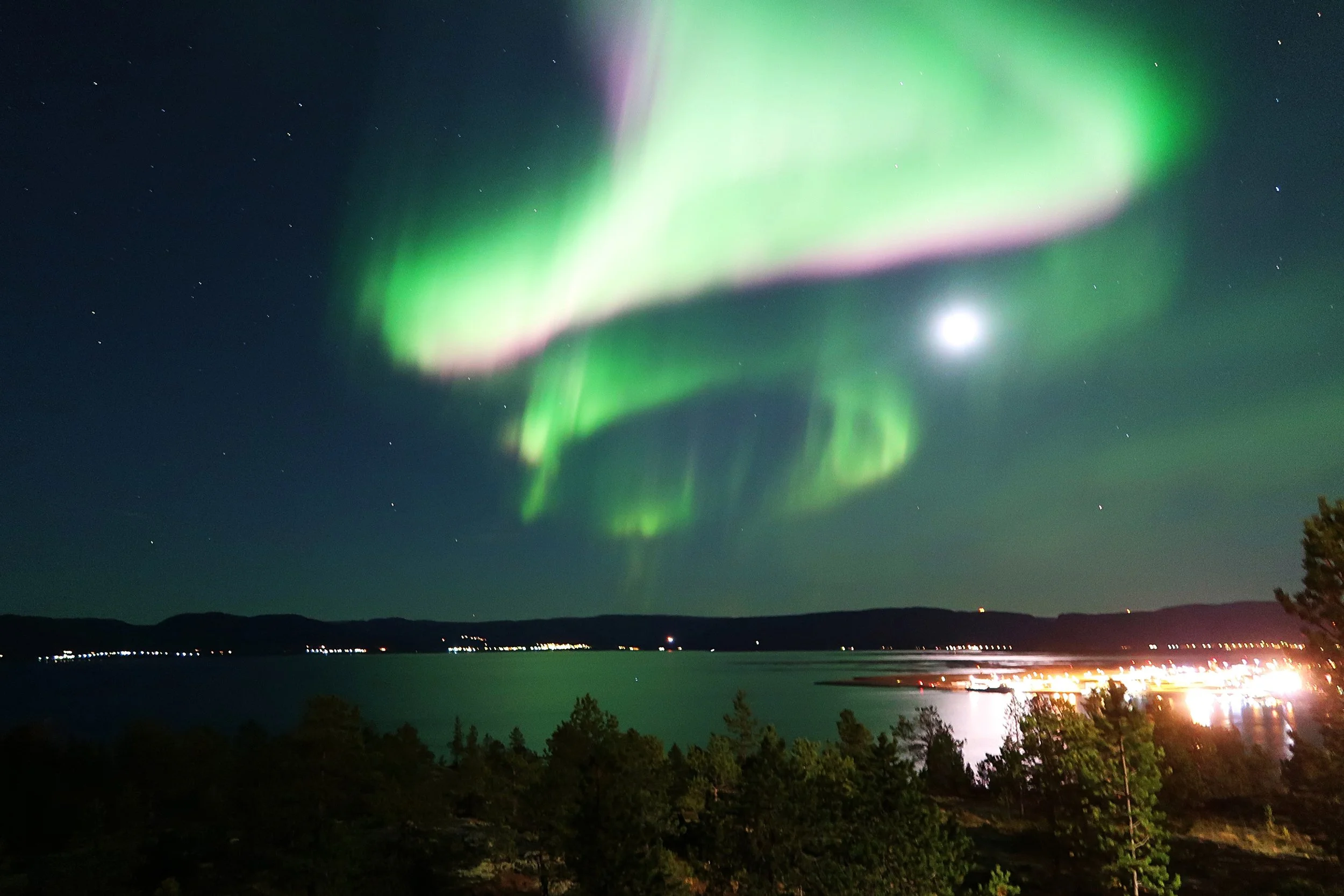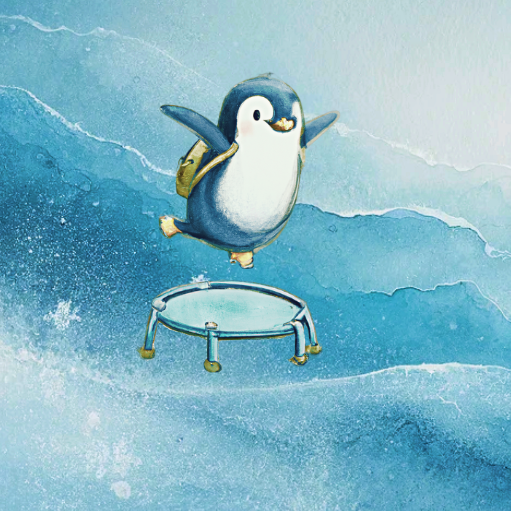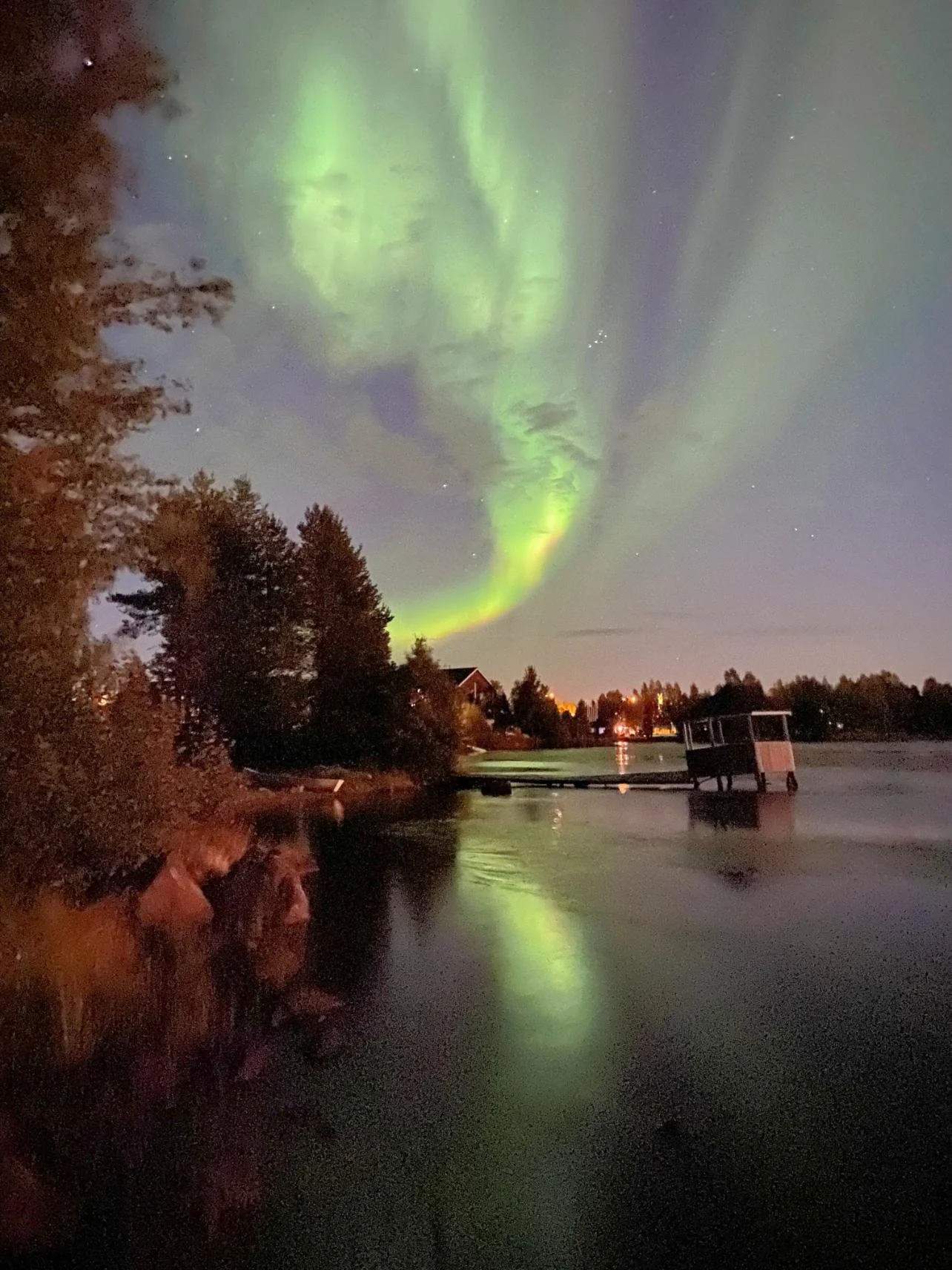Northern Lights for Dummies: The Beginner’s Guide to Chasing Aurora
Everything you need to know to see the northern lights — including the infamous Kp index!
Lofoten islands, Norway
Last update: November 13, 2025
Most aurora guides read like someone copied a physics textbook during a solar storm. This one doesn’t. If you’ve ever thought “I want to see the Northern Lights but I don’t speak Space Wizard,” this is your guide. Clear, simple, no scientific gatekeeping — just the stuff you actually need to know.
The Northern Lights aren’t rare. They’re just misunderstood. You don’t need a PhD, perfect luck, or a Viking-level tolerance for misery. You just need the right place, the right season, and a tiny bit of solar magic. Once you understand how the aurora really works, the whole thing becomes a lot less mysterious (but still magical) — and a lot more achievable.
But between the best locations, when to go, the weather forecast, and the more scientific details such as the Kp-index (Kp-what?), it's not always easy to know where to start.
So if the northern lights have been on your bucket list for a while, keep reading for a few northern lights tips!
Plan your trip: Find cozy places to stay in the Arctic, rental cars to chase the northern lights and aurora tours.
Planning to stand in the Arctic dark waiting for the sky to explode? Amazing. But slipping on ice, missing a ferry, or getting in a snowmobile wreck (true story)? Less so.
We partner with Heymondo to offer 5% off travel insurance — and sometimes up to 15% during seasonal promos. It covers adventurous stuff like dogsledding, snowmobiling, and frostbite-inducing photography missions.
👉 Click here to get your discount. Peace of mind included. Polar bear attacks not covered (just kidding — kind of).
Where to go?
Where to see the northern lights?
So, Fairbanks, Alaska is apparently the northern lights capital. But wait, Tromso, Norway also claims to be the Aurora Capital. Actually… So does Alta, Norway, which even boasts a northern lights cathedral. What about Rovaniemi, Finland, home of Santa? And Iceland, with all its magical activity and little people? Oh, and Abisko National Park, Sweden, with its "Blue Hole"?
Yes, all arctic destinations are competing for the best northern lights! And while some locations might be better than others, as long as they are above or close to the Arctic circle, you have a good chance to see Lady Aurora — that is, if weather, solar activity and Mother Nature (or Viking divinities?) allow.
Jake fake-proposing in Luleå, Sweden (his original attempt failed in Svalbard)
And if you don't live in the Arctic? Well, there might be some hope. When the Kp-index is high enough, — if you don't know what that is, more on this below — the northern lights can be seen as far south as Scotland, Ireland, the northern United States and even sometimes England.
And if you live in Spain, like us? Well... Not happening, sorry, but you can save for a Norwegian flight! If you don't need luxury conditions, Arctic travel is not as expensive as you might think. Or get a northern lights projector (joking).
Did you know?
When the Kp-index is high enough, — if you don't know what that is, more on this below — the northern lights can be seen as far south as Scotland, Ireland, the northern United States and even sometimes England
What about the Southern Lights?
Well, I’ve never had a chance to see them, but obviously they are a lot more difficult to hunt since you would need to go to Antarctica. When the solar activity is intense enough, you could see them as far north as New Zealand's South island and Patagonia, but it's not an everyday occurrence.
The other lights
Finally, wherever you are, look for a dark place, away from light pollution. So, avoid cities and houses, if possible. Bear that in mind when booking your accommodation!
If the moon is bright, faint northern lights will be harder to see, but there’s nothing you can do about that. However, if the northern lights are intense, a bright, full moon will provide an amazing lighting for a beautiful backdrop — and for selfies or pictures of other people! If you have a rental car, look for the best cloud coverage conditions and open spaces — for example: beaches, fields, frozen lakes, or the top of a mountain if you feel adventurous!
Lady Aurora and Mister Weather
One key factor often overlooked is weather, especially if you don't have a lot of time. Indeed, Arctic weather is unpredictable and unstable. So, if you are only there for a few days, you might have clouds or snow all the time and never see a clear sky. For example, coastal Northern Norway provides the right latitude and an incredible backdrop for the northern lights. However, the weather is a lot more unstable than inland. The same applies for Iceland.
When to go?
This is why fall is my favorite season for northern lights watching:
It's not freezing cold yet, so you can spend hours outside hunting for the most magical natural phenomenon there is. And while darkness is the only element that matters for northern lights, I've always seen the most intense northern lights in the fall.
Besides, there is scientific evidence showing that the northern lights are more intense around the fall and spring equinoxes. In spring though, there is already too much daylight at these latitudes.
In a nutshell, anytime is good as long as there is darkness (usually between September and March/April depending on the destination), but I would recommend fall. That being said, I saw a very intense aurora in Fairbanks, Alaska, at the end of August, although I had to wait til 1am for astronomical night.
And as far as time is concerned, statistically, most auroras appear between 10pm and 2pm. Again, statistically, as they might appear virtually anytime! I saw the northern lights at 4pm in January in Swedish Lapland and at 3am in Alaska in August.
Check the best time to see the northern lights here!
Northern lights apps
Alright, so you know where to go and when to go. Now, you just have to wait and hope for good luck. Well... there is something else that might help. Technology of course! While the northern lights are a natural phenomenon that cannot be 100% predicted, there is some technical data to look out for. And if your are not an astronomer or northern lights photographer, some apps make your life easier with simple tables and maps.
Thanks My Aurora App for featuring my picture (not the reason why I mention it!)
There are many on the market, but based on my experience, I recommend the free app My Aurora Forecast. It shows you data like the expected Kp-index, the ovation auroral and the cloud coverage based on your location. If to you, "kp-index" and "ovation auroral" sound like Chinese does to me, I encourage you to read this article which explains the key data in a very simple way. It's worth reading a bit on the northern lights to understand why they happen... and to show off at your next party: "Yeah, so we saw the northern lights in Lapland but the Kp-index was a little low..." Going back to the app, it also sends you free alerts when the aurora is expected to be active at your location.
Even if the Kp-index is low, the weather is not great and the ovation auroral is small, I still encourage you to try. Mother Nature might surprise you! In the same way, you might have a super clear sky and a high Kp and not see anything at all. It wouldn't be magical otherwise, right?
Northern lights photography
If you are lucky enough to see the northern lights, you will probably want to immortalize the moment with some pictures. Ok, so before you do anything: enjoy!!! And then yes, take pictures. You're gonna want to share those with people! Some northern lights are very short but others last for hours, giving you plenty of time to try the best settings on your camera depending on the lighting conditions, backdrop, the intensity of the aurora, etc.
Recommended manual settings for northern lights photography
Again, the exact settings depend on many factors, but try this to start:
Use an aperture of f/2.8, or even wider if your lens allows (might not be necessary for very bright northern lights).
Adjust an ISO from 1500 to 6400 (this varies greatly depending on the artificial lightning and the moon).
Set a shutter speed between 1-15 seconds (same here, you're gonna have to test it).
Always use a timer or a remote, if you have one, to prevent the camera from shaking when capturing the picture. It can also be handy for a selfie!
Alta, Norway
Northern lights photography tips
If you don't have a tripod, try to find something stable to place the camera on. I've used logs, stones, pieces of furniture I found nearby, trash cans, the roof of my rental car and a mini tripod when not traveling with my big one.
You’ll find more tips in our Northern Lights Photography Guide.
Penguin Trampoline tip:
Is this an aurora?
If you spot a weird-looking cloud and you can see the stars through, it might be a faint aurora, or the beginning of one. To be sure, take a picture with the manual mode on your camera. If the cloud is green on the picture, it's an aurora and it might be worth sticking around to see if it develops!
Remember to pack an extra battery. If temperatures are icy cold, your battery will run out much faster.
If temperatures are freezing, wear thin gloves underneath thicker gloves so you don't have to expose your hands to take pictures or adjust settings.
No manual mode on your camera? Nowadays, most smartphones with a ‘night mode’ actually take pretty good pictures of Lady Aurora, as long as it's bright enough. Plus they come with a camera stabilizer, which is super handy for longer exposure times!
It’s a kind of magic
Northern lights in Kemijärvi, Finnish Lapland
Some people who went to the Arctic for several weeks told me "We didn't see a damn thing.” Well, they might have not seen anything, but were they REALLY looking? I mean, I traveled up North with many different people and very few were willing to in the cold for several hours. Fortunately, I always volunteered!
Because here is the thing: You can't go outside for 2 minutes, look up and say that you tried. You can't turn on a switch to make the northern lights appear. That's what's so magical about it. There is something very special about patiently waiting in the dark, in the cold, with the only sound of the wind on the snow and the sled-dogs dog howling. Actually, if they do howl, it’s good sign for you as they can sense the lights!
So, if you are really dreaming of seeing the northern lights, better your odds:
Be patient
Look up, look up, look up, in all directions (I lived in Sweden for 6 months and ended up with a torticollis)
Wear layers and good clothing for extreme weather. If you have to invest in something, invest in good shoes and a warm jacket. Cover your hands, head and face.
Keep trying. Don't be discouraged.
Don't base an entire trip on northern lights. Whatever your destination is, the Arctic has so much to offer! Plan other activities like hiking, dog-sledding, Arctic swimming, etc, and consider the Aurora as a bonus so you don't get too disappointed.
Book a tour with experts
Finally, if you are lucky enough to see nature's most incredible show, please reach out and send me your pictures! And once you've seen them, try the next ultimate Arctic experience: surfing under the northern lights in the Lofoten islands! Too extreme? Why don't you watch them from the comfort of an accommodation with big windows, a sauna, or a hot tub instead?
Plan your northern lights trip
✈️ Find flights to the Arctic — connect via larger cities: Omio Flights
🏨 Find hotels in the Arctic — from igloo rooms to fjord-view lodges: Booking.com Hotels
🧭 Book northern lights tours — Dog sledding, reindeer, snowmobiles, and more: GetYourGuide Tours
🚗 Compare car rentals — for scenic drives and trips: Rentalcars.com (exercize caution in winter)
🧤 Get Arctic gear — enjoy outdoor activities without freezing: Shop our Amazon Arctic gear list
🛡️ Heymondo Travel Insurance (5–15% off) — tested in the Arctic: Get Heymondo
🐾 Fahlo Wildlife Bracelets (20% off) — track a real Arctic animal: Shop Fahlo
FAQ: Seeing the Northern Lights
When is the best time to see the Northern Lights?
The best months are from late September to late March, when the nights are longest and skies are darkest. Peak season is usually December to February, but the real MVP is clear skies — wherever and whenever you get them. Check our article “Best Time to See the Northern Lights” for more.
Where is the best place to see the Northern Lights?
Top spots include Northern Norway (like Alta and Tromsø), Iceland, Swedish and Finnish Lapland, Greenland, and northern Canada. Your main mission? Go north, avoid cities, and keep checking the sky. You’ll find more inspiration in our guide “Best places to see the northern lights in Europe”.
Can you see the Northern Lights in summer?
Nope. Even if there’s solar activity, the midnight sun means it’s just too bright. Darkness is non-negotiable, which means no auroras from late May to early August in most Arctic regions.
Do I need to join a tour to see them?
Not always. If you’ve got a rental car, decent map skills, and an aurora forecast app, you’re good. But tours can help with cloud dodging, insider tips, and finding photogenic spots fast.
What causes the Northern Lights?
Science time: charged solar particles hit gases in Earth’s atmosphere (like oxygen or nitrogen), and boom — you get glowing green and purple skies. Think of it as space weather doing performance art. You’ll find more scientific info in our article: “What are the northern lights”.
What’s the best time of night to see them?
You’ll want to be outside between 9 PM and 2 AM, ideally somewhere dark and open. Bring snacks, dress warm, and don’t give up after 30 minutes — sometimes they show up fashionably late. Basically, as long as there’s darkness, they can appear.
What should I wear to see the Northern Lights?
Layers are life. Go for a merino base layer, insulated mid-layer, windproof shell, gloves, beanie, and solid winter boots. Standing still in Arctic weather = instant popsicle. Make sure to read our guide on What to Wear for a Northern Light Trip, and our Ultimate Arctic Travel Guide for more packing tips.
Can I photograph the Northern Lights with my phone?
Surprisingly, yes! Newer phones with night mode can catch the glow, especially if you keep the camera steady. But a real camera, tripod, and manual settings will still give you the best results. You’ll find more tips in our Northern Lights Photography Guide.
Do I need travel insurance for a Northern Lights trip?
It’s highly recommended. Arctic trips = snow, ice, reindeer crossings, and unpredictable everything. If you’re snowmobiling, dogsledding, or chasing auroras off the beaten path, you’ll want good coverage. We partner with Heymondo, which covers outdoor adventures and offers 5% off (sometimes up to 15% during promos). Book your discounted policy here.
Here is my personal playlist to call Lady Aurora:
Be careful: you can easily get aurora-addicted!
Dreaming of the aurora? Don’t miss our Northern Lights dedicated guides:
🌍 Best Places to See the Northern Lights in the World — From Alaska to the Southern lights, the aurora knows no borders.
🇪🇺 Best Places to See the Northern Lights in Europe — Iceland, Norway, Lapland and beyond.
📅 Best Time to See the Northern Lights — Month-by-month, season-by-season, when the sky is most likely to dance.
📸 Northern Lights Photography Tips — Camera settings, tripods, and how not to end up with 200 blurry green smudges.
🌌 What Are the Northern Lights? — The science, the legends, and the cosmic drama behind those glowing ribbons.
🧤 What to Wear for a Northern Lights Trip — Layer up or freeze up: the packing list you actually need at –30°C.
🏨 Best Northern Lights Hotels in Europe — Sleep under the aurora in glass igloos, ice hotels, and hot-tub hideaways.
🌌 Northern Lights in Norway — Your guide to clear skies, fjords, and the best aurora spots.
Last update: September 18, 2025

